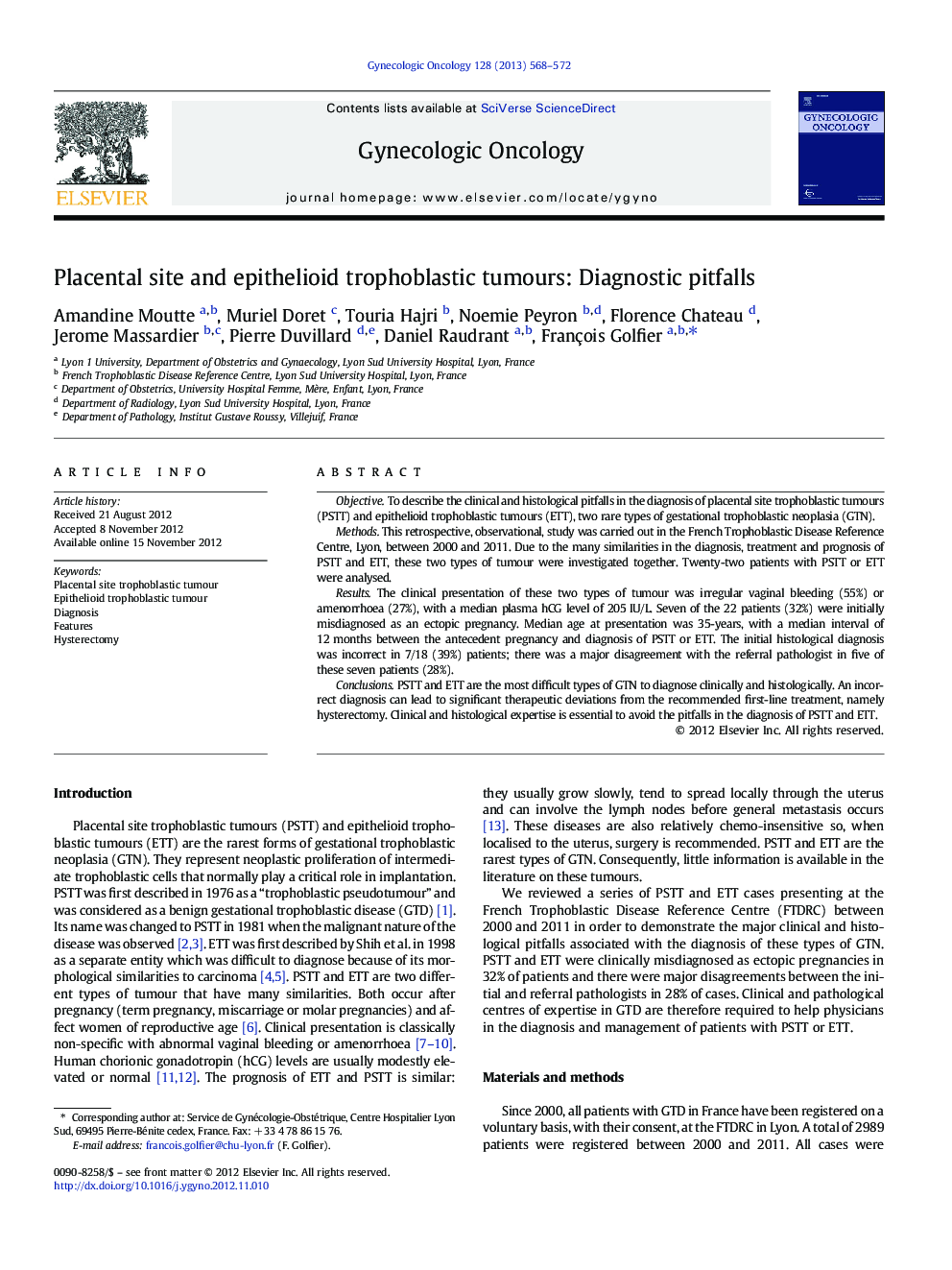| Article ID | Journal | Published Year | Pages | File Type |
|---|---|---|---|---|
| 3944854 | Gynecologic Oncology | 2013 | 5 Pages |
ObjectiveTo describe the clinical and histological pitfalls in the diagnosis of placental site trophoblastic tumours (PSTT) and epithelioid trophoblastic tumours (ETT), two rare types of gestational trophoblastic neoplasia (GTN).MethodsThis retrospective, observational, study was carried out in the French Trophoblastic Disease Reference Centre, Lyon, between 2000 and 2011. Due to the many similarities in the diagnosis, treatment and prognosis of PSTT and ETT, these two types of tumour were investigated together. Twenty-two patients with PSTT or ETT were analysed.ResultsThe clinical presentation of these two types of tumour was irregular vaginal bleeding (55%) or amenorrhoea (27%), with a median plasma hCG level of 205 IU/L. Seven of the 22 patients (32%) were initially misdiagnosed as an ectopic pregnancy. Median age at presentation was 35-years, with a median interval of 12 months between the antecedent pregnancy and diagnosis of PSTT or ETT. The initial histological diagnosis was incorrect in 7/18 (39%) patients; there was a major disagreement with the referral pathologist in five of these seven patients (28%).ConclusionsPSTT and ETT are the most difficult types of GTN to diagnose clinically and histologically. An incorrect diagnosis can lead to significant therapeutic deviations from the recommended first-line treatment, namely hysterectomy. Clinical and histological expertise is essential to avoid the pitfalls in the diagnosis of PSTT and ETT.
